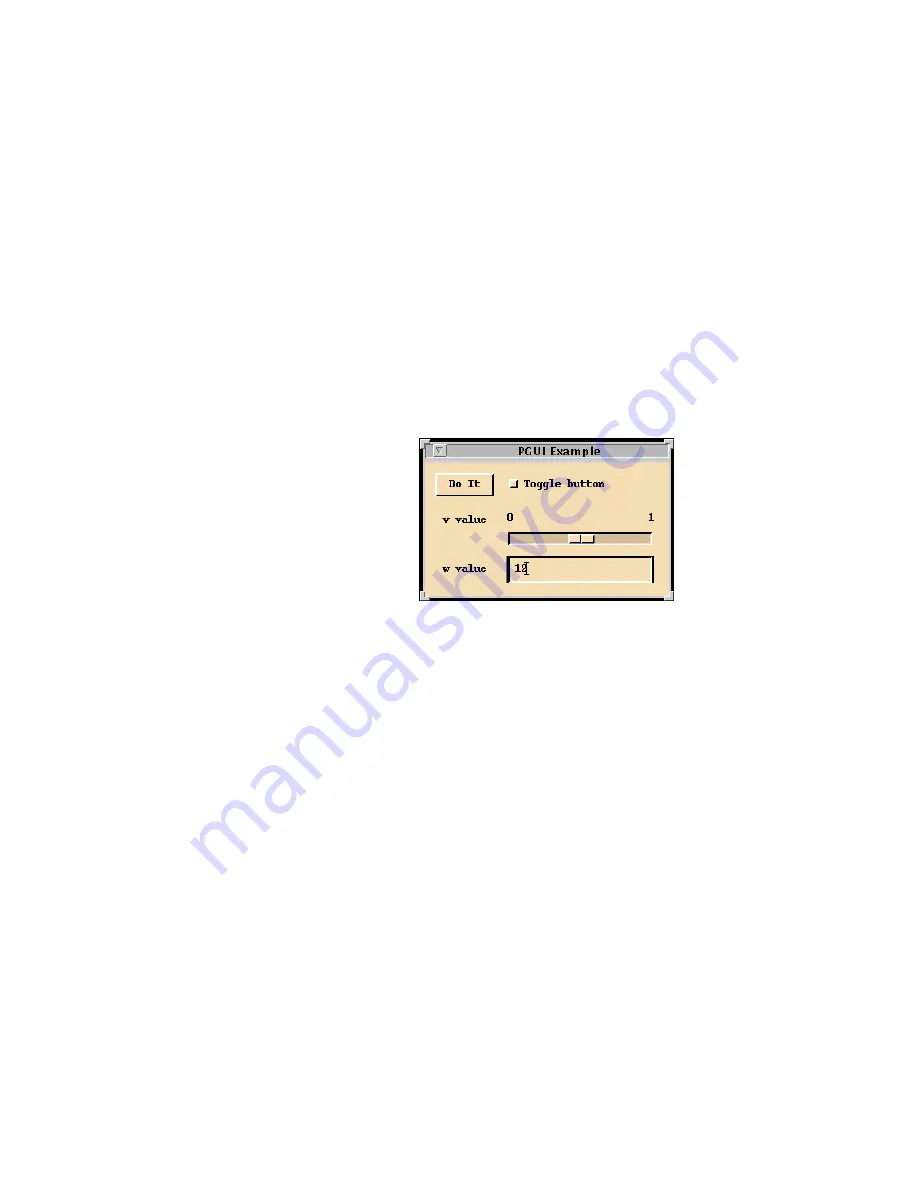
Appendix A
Using an Xmath GUI Tool
©
National Instruments Corporation
A-5
Xmath Interactive Control Design Module
•
GUI windows might contain buttons that display some value. The
value can be changed by clicking the button, whereupon a text entry
area will appear in place of the button. You can enter a new value
followed by pressing <Return>. If the GUI tool does not like your new
value, it reserves the right to change it to an acceptable value that is
displayed again in the button. These buttons are called
variable edit
boxes
.
•
The button labeled
12
shown in Figure A-2 is a variable edit box
(displaying the value of the variable
w
). If you click this button, it is
replaced by the “
w
value” text entry area as shown in Figure A-3. After
a value is entered from the keyboard, the text entry area is replaced by
the button (for example, the
12
button).
Figure A-3.
PGUI Example Dialog after Pressing the 12 Button
•
GUI windows might contain
sliders
, which resemble linear
potentiometers and whose values are changed by a linear motion of the
handle. The position of the slider’s handle represents its value. Usually
the limits of the slider are shown at its ends. Figure A-3 shows a slider
with minimum value 0 and maximum value 10. Its value is about 6.
The value of a slider can be changed in several ways:
–
The handle can be grabbed and dragged by clicking the left mouse
button on the handle. Some GUI tools might do something (for
example, change a plot) as the handle is dragged. In other cases,
nothing will happen until the handle is released at the new value.
–
The handle can be set to a new value by clicking with the middle
button at the new value.
–
The value can be increased or decreased a small amount by
clicking the left button away from the handle. Holding the button
down makes the handle steadily move towards the cursor.






































